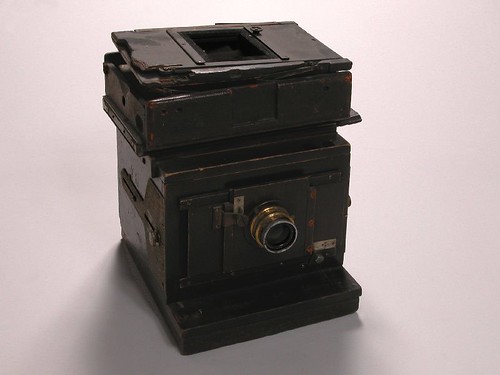Difference between revisions of "Message register camera"
(added text and refs) |
m (italics) |
||
| Line 12: | Line 12: | ||
'Picture of telephone meter assures true reading.' ''Popular Mechanics'', November 1932, p. 758.— | 'Picture of telephone meter assures true reading.' ''Popular Mechanics'', November 1932, p. 758.— | ||
'Huge Camera reads meters to count telephone calls.' ''Popular Science'' vol. 131 nº 1, July 1937, p. 37.</ref><ref name="Connor"> | 'Huge Camera reads meters to count telephone calls.' ''Popular Science'' vol. 131 nº 1, July 1937, p. 37.</ref><ref name="Connor"> | ||
| − | Connor, Steve (1983) New Telephone Bills detail every call. New Scientist 19 May 1983, pp. 448-449.</ref> until the 1950s (models T-5 and T-6)<ref>Seen in an on-line auction.</ref> Later they were either standard cameras with focus and exposure locked down or factory-customised versions of standard cameras, such as the [[Topcon T]] manufactured by [[Topcon | Tokyo Kogaku]]. The increased computerisation in the early 1980s saw photographic documentation of message registers rapidly declining.<ref name="Connor" /> | + | Connor, Steve (1983) New Telephone Bills detail every call. ''New Scientist'' 19 May 1983, pp. 448-449.</ref> until the 1950s (models T-5 and T-6)<ref>Seen in an on-line auction.</ref> Later they were either standard cameras with focus and exposure locked down or factory-customised versions of standard cameras, such as the [[Topcon T]] manufactured by [[Topcon | Tokyo Kogaku]]. The increased computerisation in the early 1980s saw photographic documentation of message registers rapidly declining.<ref name="Connor" /> |
==Links== | ==Links== | ||
Revision as of 03:36, 9 November 2012

|
| Message Register camera image by PanelSwitchman (Image rights) |
A message register camera is a fixed-focus camera specifically designed to photograph the message registers[1] of automatic telephone exchanges for billing purposes and to avoid transcription errors.[2] In the beginning they were custom-designed cameras, such as the Factograph manufactured by Graflex which underwent development from the late-1920s[3][4] until the 1950s (models T-5 and T-6)[5] Later they were either standard cameras with focus and exposure locked down or factory-customised versions of standard cameras, such as the Topcon T manufactured by Tokyo Kogaku. The increased computerisation in the early 1980s saw photographic documentation of message registers rapidly declining.[4]
Links
Notes
- ↑ The 'phone-call meter' (UK) was called a message register in the USA.
- ↑ For background on excanges see here.—For the mechanics of photographing message registers, see for example: Photographing Message Registers Using KS-20900 L1 Message Register Camera. Bell System Practices AT&TCo Standard Section 030-304-301 Issue 1, October 1972 (PDF of the manual).
- ↑ 'New Magic worked by cameras' Popular Science vol. 113, nº 3, September 1928, pp. 25-26, 138-139, esp. 139.— 'Picture of telephone meter assures true reading.' Popular Mechanics, November 1932, p. 758.— 'Huge Camera reads meters to count telephone calls.' Popular Science vol. 131 nº 1, July 1937, p. 37.
- ↑ 4.0 4.1 Connor, Steve (1983) New Telephone Bills detail every call. New Scientist 19 May 1983, pp. 448-449.
- ↑ Seen in an on-line auction.

|
| Message Register Frame of 10 x 10 counters image by PanelSwitchman (Image rights) |